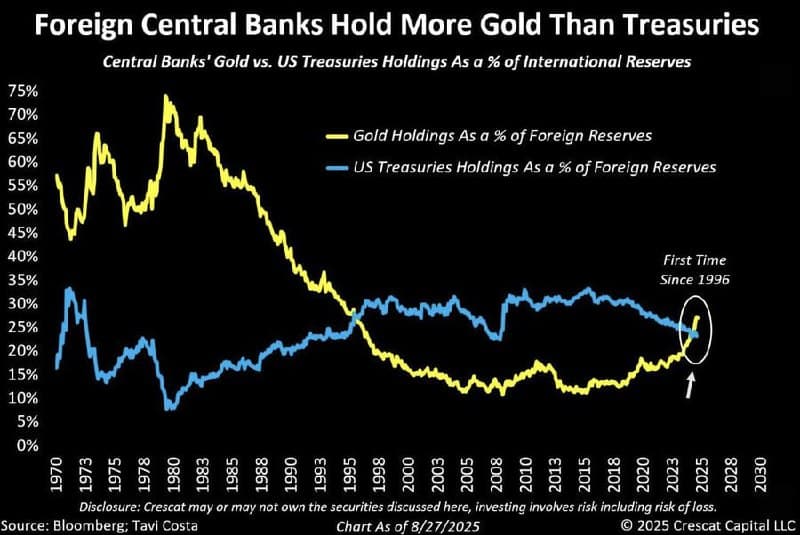For the first time in nearly three decades, foreign central banks now hold more gold than U.S. Treasuries, marking a significant shift in global financial dynamics. As of August 2025, these institutions have amassed approximately $4 trillion in gold reserves, surpassing their U.S. Treasury holdings, which stand at around $3.8 trillion.
This trend underscores a growing confidence in gold as a safe-haven asset amid ongoing economic uncertainties and geopolitical tensions. Recent developments indicate that central banks worldwide are diversifying their reserves, moving away from traditional assets like U.S. Treasuries in favor of gold, which is perceived as a hedge against inflation and currency volatility.
The last time foreign central banks held more gold than U.S. Treasuries was in the mid-1990s. Since then, the U.S. dollar has been the dominant reserve currency, but current events are prompting a reevaluation of this status. As previously reported, the Federal Reserve"s aggressive monetary policies and fluctuating interest rates have contributed to this shift, as countries seek to stabilize their economies and reduce dependency on dollar-denominated assets.
This change could have far-reaching implications for the global economy, potentially affecting currency values and international trade dynamics. Analysts suggest that as central banks continue to prioritize gold, we may see increased volatility in the bond markets and a reevaluation of fiscal policies across nations. These developments highlight the importance of monitoring shifts in asset allocation among major players in the financial landscape.








![[Video] Coast Guard sniper takes out narco-boat in Eastern Pacific](/_next/image?url=%2Fapi%2Fimage%2Fthumbnails%2Fthumbnail-1765029104101-04awi-thumbnail.jpg&w=3840&q=75)